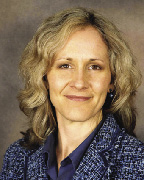With a couple of major transactions, such as the TJX purchase and subsequent expansion into the former Fidelity buildings in Marlborough, the 2012 suburban market is seeing a little more action than was present in the past several years.
However, total transactions continue to be approximately level from 2011 overall and February 2011 transaction volume was down from the prior year period according to CoStar reports. The average size of transactions is also down precipitously and owners are focused on limiting transaction costs as the expectations between buyers and sellers has widened, leading to fewer deals. New construction starts exist, but are few and far between.
Given these facts, the need to reuse/repurpose existing buildings is paramount. Financing a "new" development deal is tough these days which makes the reuse of unused existing space a major focus in the effort to meet the needs of growing market sectors and goods/services providers. Many owners are focused on efficiency and maximizing the use of properties to achieve financial stability rather than looking down the road at new projects. Deals such as the TJX expansion into the old Fidelity space in Marlborough and the former Hewlett Packard space that is currently available, as well as the reuse of structures in Downtown Framingham - including the Salvation Army site and the Avery Dennison sites - get made on one principal - the best and most efficient use of the site for a growing company or a growing economic sector rules the day.
As the Metro West area moves forward in a stabilizing marketplace, there are four factors significant to a successful commercial real estate endeavor: efficient maintenance and utility costs; effective assessment of management strategy, alignment of use with expanding tenant needs and the highest and best value of the property, effective structuring of the base rent format to provide landlord with necessary debt coverage.
Landlords have adjusted to a new normal with stabilized debt at higher vacancy levels. And while most landlords are anxious to complete new leases and spread their overhead drag, landlords continue to be hesitant of new retail concepts and very wary of proposals including large amounts of landlord funded tenant improvements.
That being said, the exciting new opportunities in the market include new prototypes with reduced square footage; changing consumer habits, increased focus on millennials and seniors as demographic patterns shift, increased focus on LEED certified buildings to reduce utility consumption; reduced aggregate retail purchasing by consumers which will lead to different purchasing patterns; focus on NNN costs as properties begin to compete on NNN efficiency and reduction in per person office space usage.
Additionally, demographics will drive increased health and wellness focus as boomers age and access and ease of use become more of a focus. This is readily visible in the reuse of deserted or under used strip malls, churches and school buildings.
Retail strip centers, with their ease of access and neighborhood locations, are an excellent choice for senior centers, community and medical services and recreational uses. As well, if desired, adding floors of apartments above the retail floor area increases the ability of those aging to stay in a beloved neighborhood and still be able to access needed goods and services on a daily basis, without driving.
As the boomers age and desire to stay put in their homes, ease of access to needed services will be essential to the success of the commercial space in these areas. The Landlords must cater to the tenants that will be able to pay the rent and turn a profit - this being, in many case, services and businesses with a focus on the senior population.
Churches and school buildings can become excellent destinations as social groups and planned activities cater to the needs of those with free time and an interest in staying connected in the community. Senior community centers and adult day programs are fitting into church facilities very nicely as are programs such as Meals on Wheels and other community services. Unused schools are able to be repurposed as walk in medical centers or even as apartments for seniors, with appropriate retrofitting. Both churches and school are well positioned throughout communities, which anchors them in a neighborhood and allows seniors to easily partake of events and services at these locations - often without the need to drive.
Interestingly enough, the strength of this senior market sector is such that it is one arena in which new projects are able to be funded and built. Projects that were designed and shelved are coming back to life - repurposed as senior housing or as venues for senior services.
In summary, the market we are moving into will stabilize into a new normal which will include more focus on effective use of space, reduced overhead and transaction costs and increased focus on seniors and young professionals.
Katherine Wellington is a principal with IPS/Investment Property Specialists, Inc., Framingham, Mass.
Tags:
Metro West suburban market: The new normal will offer exciting new opportunities
March 28, 2012 - Spotlights









.png)